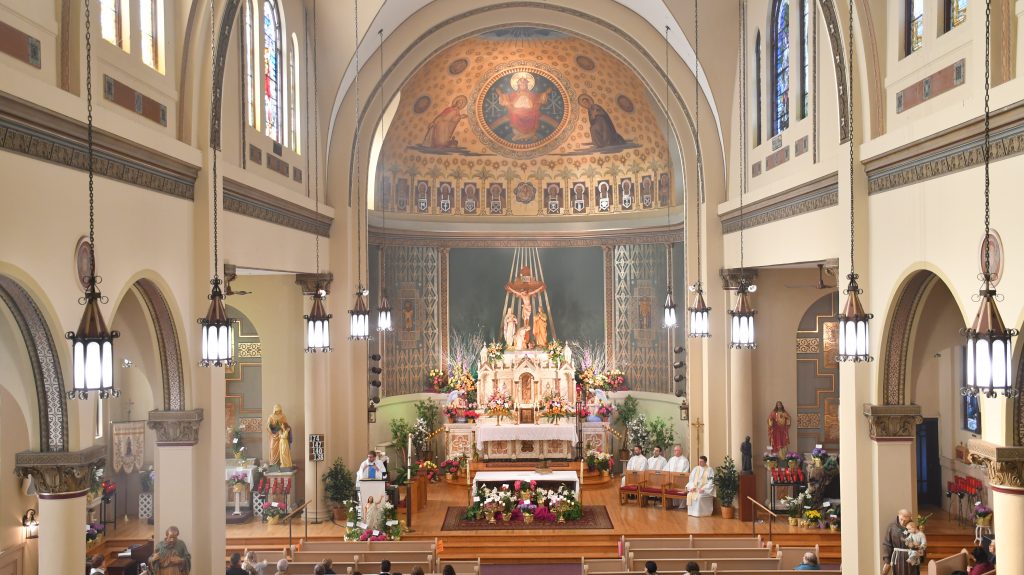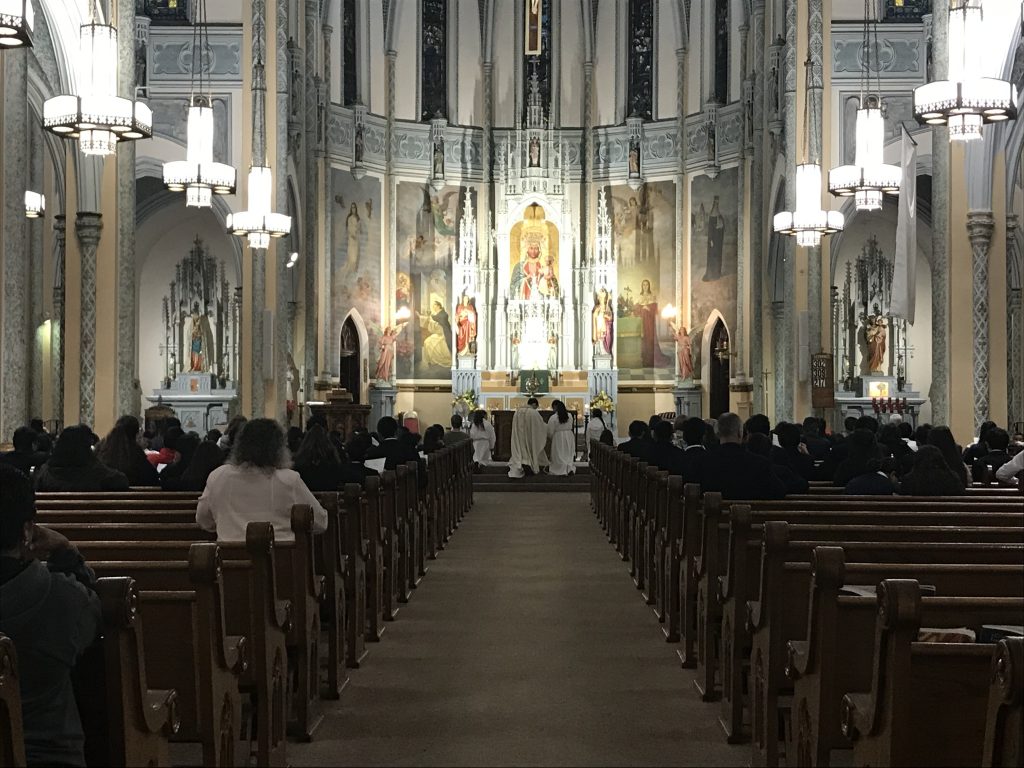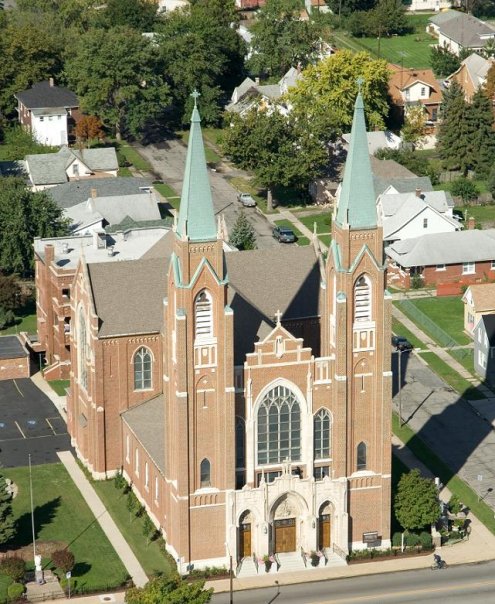July 9, 2019 // Parish
Polish immigrants laid foundation of faith at St. Casimir, St. Adalbert
Have you ever walked into a church so beautiful it made your heart soar, inviting you into worship? Children sometimes have that reaction when they crane their necks to take in the second balcony of St. Adalbert Church, which former pastor Father Leonard Chrobot called the “cathedral of the west side.” It was built, he said, “by poor people who believed in their families’ church and their community.”
That’s also how Ann Marie Sommers feels about St. Casimir Parish, which shares staff with St. Adalbert. Sommers’ “dzia-dzia,” or great-grandfather, John Markiewicz, used to hurry home from his job at the Studebaker Corporation to continue digging the basement for the original St. Casimir. He was one of the founding members of that Polish parish, so no wonder his great-granddaughter was happy to serve on two committees to renovate the church: the first to accommodate the changes ushered in by Vatican II, the second choosing “snickerdoodle” as the basic color.
Vicki Kruszka is delighted that several newly ordained Holy Cross priests have come back to the quiet elegance of St. Casimir to celebrate their first Mass. Among them is Father Michael Thomas, who wanted to say Mass there on Divine Mercy Sunday before returning this summer to his assignment in Santiago, Chile.
Kruszka describes what she sees at the front of the church: “I love the way our sanctuary is so Christ-centered. In the blue spot on the top there is the Eye of God the Father; (it) goes down to God the Son. Down a little more, right in the middle of the 12 Apostles is an image of God the Holy Spirit: Continue downward to Christ on the cross, down more to the Tabernacle and then to the altar. It’s a wonderful visual when reciting the Creed. I miss it when I attend Mass at other churches.”
When she pointed out these features to Bishop Kevin C. Rhoades, he spent a long time gazing at the image, she said.
Only blocks apart, the two churches were built by Polish immigrants: but they came from different regions of Poland, a land that itself was often divided among neighboring countries, not unlike how their tightknit neighborhoods on the west side of South Bend were separated from each other and from St. Hedwig, the original Polish parish in South Bend, by railroad tracks.
Occasionally, parishioners from these different churches married each other. Organist Elaine Witucki grew up two blocks from St. Adalbert, but husband Ralph belonged to St. Casimir.
Hispanic Catholics who formerly belonged to St. Stephen Parish were incorporated into St. Adalbert and St. Casimir parishes when their parish closed; a transition that was challenging, but doable. Today, as Witucki puts it, “Our liturgies are enriched as we blend Polish and Spanish customs. Some people think we are unique or different. To me we are Church in the real sense of the word.”
With such deep roots, it’s not unusual for parishioners like Kruszka to attend St. Casimir regularly even though she now lives in Lakeville. She doesn’t think her family was especially pious, but their church was still the center of social life in the neighborhood.

St. Casimir Parish, South Bend: taken during Holy Cross Father Michael Thomas’ first Mass earlier this spring. — Photo by Christopher Lushis.
That was also the case for Sommers. Her aunt was a nun and one of Sommer’s teachers at St. Casimir School. Family members were involved in “every group there has ever been in the parish,” she said. Her father, Bob Audenaert, ran the six-day parish festival. She remembers waving to her grandfather, Peter Audenaert, on her way to church; she could see him in the sun room of the rectory counting the collection from an earlier Mass. Her great-uncle chaired the committee for the 50th anniversary of the parish, so she had no hesitation about chairing the 1998 centennial celebration.
During the planning for that occasion, Sommers learned that Pope John Paul II was about to visit Cuba. She wrote to him, describing the parish and inviting him to stop by. Of course that didn’t fit into the Holy Father’s schedule, but it was clear that he had personally read her letter. His response assured her of his prayers for the parish that was as humble as its patron, St. Casimir.
Although religious practices buttress faith, they can’t substitute for it. At some point, faith must become personal. For Kruszka, that began to happen when she started listening to Relevant Radio and then EWTN. “I started hearing these Protestant preachers who were formerly very anti-Catholic but became Catholic, and they’re talking about all these aspects of the faith and I’m thinking, ‘Why don’t I know that?’”
That got her exploring the reasons for her faith. She loves helping with the preparation classes for adult catechumens and candidates, in which people ask fascinating questions, she said.
Sommers added that St. Casimir has always been her spiritual home, but she credits Father Howard Kuhns, CSC, with influencing her spiritual development and helping her come to terms with her faith in a personal way.
“When I walk into St. Casimir,” said Sommers, “I feel enveloped by the Holy Spirit. I can still picture myself sitting in the pew with my grandmother. This is where I belong and where I should be.”
The best news. Delivered to your inbox.
Subscribe to our mailing list today.








